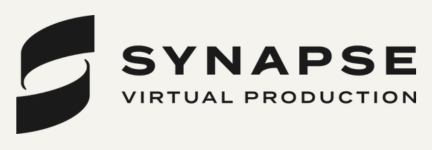
Creators as Strategists: Beyond Influence and What Comes Next

Part One – Creators as Strategists: The New Power Players in Brand Marketing
-
“The smartest strategists I’ve met didn’t sit in a planning team – they built YouTube audiences from scratch and knew exactly how to hold their attention,” influencer strategy lead at PrettyGreen, Sammy Albon, told LBB.
After nearly a decade as a full-time content creator, he crossed over to the agency side where he has seen a significant industry shift: “creators aren’t just content producers anymore – they’re killer strategic partners.”
Creators aren’t just valuable at the point of execution, he said, rather “they bring platform instinct and a sharp sense for what’s culturally resonant that makes the work smarter from the get-go.
“Of course, for some marketers, that level of collaboration still feels uncomfortable. Old habits die hard. But this shift doesn’t need to be seismic – it just takes listening.”
Threat or Compliment?
When asked if creators were a threat or a compliment to modern strategists, Emily Williams, head of strategy at Born Social said they are not only a complement, but a crucial one.
“Great strategy doesn’t happen in isolation. It’s not ivory tower thinking. It’s lived, observed, felt by real people for real people. And creators are in those moments every day curating and cultivating their audience,” she said.
Speaking to Born Social’s community-first strategy, Emily said it’s important for strategy to be built from audience behaviours and conversations outwards.
“Creators aren’t just part of that community; they often lead it. They have a live, intimate understanding of tone, nuance, and emerging community language. That’s not just an executional asset – that’s a strategic superpower. Strategists should stop viewing creators as executional and start seeing them as inputs. Not just how we say something, but what we say and why.
“The future isn’t either/or. It’s both/and,” she added. “Strategy becomes stronger when planners and creators co-author it.”
The shift in how brands work with creators isn’t about replacing strategists with creatives, rather it’s about recognising that the best creative work is strategic according to Abigail Olivas, head of strategy at No Single Individual.
“What’s changing is the direction of the current. Strategy used to flow into creative. Now, creative insight can (and should) lead strategic direction. In my experience partnering with agencies of all sizes — from global networks to independent shops — the strongest work happens when strategy and creativity stop jockeying for ownership and start operating in tandem. Not in handoffs, but in real-time collaboration.”
In modern creative work, she said idea and insight “can’t afford to live in silos”.
“When strategy and creativity are treated as opposing forces, the work pays the price. The real opportunity? Build teams fluent in both and who blur the line by design."
Influencer vs. Creator: Shifting Language
The word ‘influencer’ has become somewhat tainted over the past few years and more and more people are opting for titles such as ‘content creator,’ or ‘online creator’. In Australia, this was brought in front of federal politicians at a recent Press Club Address, when owner of Cheek Media, Hannah Ferguson, said the term was used to “undermine our intelligence, to paint us as untrustworthy, and to conflate us with green juice and a discount code.”
It’s a shift that illustrates how wider perspectives on influencer marketing are changing, according to Jane Chandler, vice president of influencer and public relations at BarkleyOKRP.
“As influencer marketing rose in popularity, traditional ‘advertisers’ distanced themselves from influencers with judgment. Strategic communicators, craving deeper and expanded influencer relationships, thoughtfully rebranded ‘influencers’ to ‘content creators,’ finding greater acceptance of influencers as an impactful channel that drives real action,” she said.
For those working in the space today, this shift gives room for more nuanced influencer strategies.
“As programs become more sophisticated and complex, these titles help teams differentiate the role of each influencer partner based on content style, audience relationship, and campaign goals,” Jane said.
“It’s less about semantics and more about elevating the craft, recognising that a one-size-fits-all label doesn’t match today’s tailored, brand-specific approaches.”
As ‘influencer’ falls out of favour as a title, Detch Singh, CEO of influencer agency Hypetap, said the shift does come down to a combination of “an element of truth and an element of semantics.”
“There are influencers who would prefer to be labelled as creators because it elevates their value. ‘Influencer’ implies a relationship based on reach, whereas ‘creator’ elevates their craft, strategic thinking, and the skill involved in building a community. It signals that the content itself, not just the follower count, is the core asset.”
In fact, if anything, this shift in labels should “strategically raise the bar for brands,” he said.
“The expectation is no longer just for a sponsored post, but for genuine co-creation. Brands that thrive now treat creators as skilled partners who bring invaluable audience insights to the table, moving beyond simple briefs to develop more resonant and effective campaigns together.”
At the heart of the move towards ‘creators’ over ‘influencers’ is trust, something Detch calls “the most critical thing a creator brings” to a brand.
“Their audience has opted into their world, and that relationship is their most valuable asset. They act as expert translators, taking a brand's message and delivering it in the native language of their community. Because of that, it lands with authenticity rather than sounding like a corporate memo.”
Are Commercial Models Keeping Up?
Despite the speed at which the industry is changing, commercial models still have some catching up to do. Nathan Powell, chief product and strategy officer at Australia’s Fabulate compared it to the way legislation often trails technological advancements.
“Even as creators are driving greater impact for brands, most commercial structures still treat them as talent to be booked rather than strategic partners. That may have worked when creators were simply delivering content in a vacuum, but it no longer fits when they are shaping the campaign from the inside out, and appearing beyond social in traditional placements.
“While more established creators may have frameworks for things like IP licensing and creative royalties, there is still a significant gap when it comes to directly linking their contribution to measurable business outcomes. Too often, the strategic value creators bring is acknowledged in conversation but not reflected in the contract.”
The challenge, he added, is “not all activations can be measured through closed-loop reporting. A significant amount of the value creators drive happens beyond the screen.”
“Whether it is influencing retail foot traffic, shifting brand perception, or sparking word-of-mouth within communities, these outcomes are harder to quantify but no less important. When we focus too narrowly on digital attribution models, we risk underreporting the full impact of creator-led campaigns and undervaluing their contribution.”
Micro vs. Macro
Sometimes bigger isn’t always better. Sharyn Smith, CEO of Social Soup said the marketing service has seen “huge growth in interest for micro influencer campaigns.”
“Recent research by UK econometric modelling consultants Magic Numbers showed that micro influencers (with an average 5k following) deliver 3.3 times ROI compared to bigger influencers, which is why niche audiences are gaining traction with brands. We need diversity in content from campaigns to feed the algorithms because they are designed to find the right people which delivers greater relevance and impact.”
As a result, traditional ‘authentic’ influencer marketing is facing an uphill battle against the platforms according to Sam Kelly, managing partner, Hello, who added “the rise of creators has subverted ad spend away from the platforms and into the hands of creators.”
“The platform’s answer has been to wind down organic reach across paid partnership posts. Our modelling over the last 12 months tells us on average, organic influencer content is only being seen by 5% of their audience when posted without the support of media. Whether it’s nano, micro or celebrity, we know real followers have the highest propensity to be ‘influenced’ and take action, however we’re not even getting to all of them.
“If you aren’t supporting with paid, you aren’t even authentically influencing their opted-in followers because they simply aren’t seeing it.”
For every micro influencer out there, there are ones who have huge followings at their disposal. – and being online can mean that there is less control over the audiences your brand reaches. Last year, Australian brand TBH Skincare participated in a very common online trend that ended up on Andrew Tate’s X account and spiralled somewhat out of their control.
“There’s so much for brands to be aware of now, and the power of rapidly-evolving algorithms, and the sometimes unplanned virality of a reel, can unfortunately take content into unintended places,” added Andrew Holford, chief product officer at Kinesso.
He said the TBH Skincare situation “underscores the importance of having a robust crisis management strategy in place before issues arise. From vigilant monitoring with social listening, to establishing strong brand value alignment in briefs and using platform controls, aligning on rapid response in case of crisis and also having access to a robust community management team are all things you can do to soften the impact.”
Working With The Algorithm
Director of influence marketing and creative lead for The Arts Insider, Grace Aki, argued more niche algorithms are “truly an advantage for us.”
“The more granular we can see a person’s audience base, the better the targeting can be. Just as well, the broadness of reach can be exciting, ie, a foodie creator may want to showcase a dinner and a show to their followers that support a client’s directive for “date night ideas.”
After all, with creators already out there making content, “why not be a part of a communication platform that is already being utilized by millions of potential audience members or patrons?”
Looking at the way people consume media, it’s no surprise to find that social media has one of the most dominant holds on our attention. For Matt Herbert, co-founder and CCO of Tracksuit, “that makes it critical for brands to not just show up in these spaces, but do so authentically and credibly” especially when you’re targeting a certain niche or part of the algorithm.
For this to work, he argued creators must be treated as true partners, “not just faces for hire.”
“Authenticity isn’t a nice-to-have, it’s the currency that drives impact. Overly branded or off-tone content disengages audiences. The best campaigns are co-created, grounded in trust and aligned with brand goals and creator voices.
“Creators bring more than reach – they bring instinct, immediacy, and a direct line to culture. When brands let creators lead, results follow. The funnel has flipped: creators aren’t where campaigns end – they’re where momentum begins. Brands that bring them in early stand to earn more than impressions, they build influence that lasts.”















